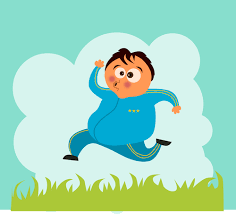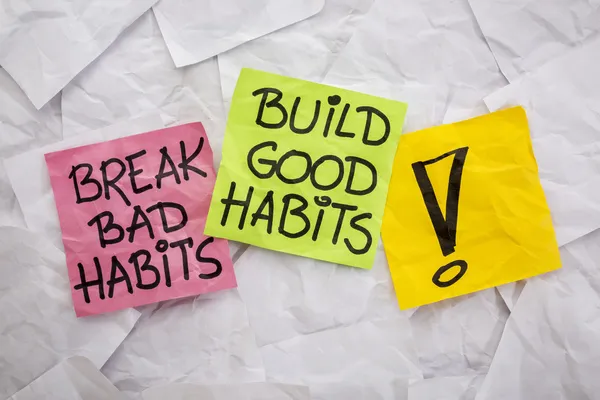
Weight Gain is not a Life Prison Sentence
For many, gaining weight can feel like a life sentence—oversized clothes, awkward jokes, and a lingering fear of the scale. But it doesn’t have to be that way. The truth is, while life can throw unexpected challenges your way, you’re not powerless. You have the ability to change your circumstances instead of waiting for them to change you. By taking a moment to reflect on when you first noticed changes in your weight, you can start identifying the habits that led you there. And the best part? You can replace those habits with healthier, more empowering ones.
Instead of bombarding yourself with thoughts like “this is just who I am” or “fit people are just lucky,” choose a different mindset—one that’s proactive. Create a game plan, then commit to it. Progress doesn’t come from wishful thinking—it comes from action.

Start a New Chapter, A healthier one
The first step in rewriting your story is learning to live fully in the present, with a clear conscience and the understanding that your past mistakes do not define you. Author and motivational speaker Ricotti Sonia simplified decades of wisdom with the quote,
‘Accept what is, let go of what was and have faith in what will be“, and she’s absolutely right. You don’t have to let your past actions define you, but you can extract the the lessons learnt to create future success and prosperity. Turn your setbacks into stepping stones by using them as motivation to tap into your full potential. The closer you get to your goal, the closer you get to becoming the best version of yourself—starting with your health and fitness goals.
If you 'Know Better' why not 'Do Better'?
Accepting yourself for who you are is a powerful sign of personal growth—but like a double-edged sword, true transformation also requires action. It’s not enough to simply want better; real progress comes when you start doing better. Obesity is linked to a wide range of serious health complications, and that alone should be a wake-up call

for positive change. Choosing to ignore the risks associated with weight gain isn’t just harmful—it’s a form of self-neglect that can have life-threatening consequences.
Its easier said than done, but once you stop procrastinating and set your goals in motion your perspective improves and things get better in more ways than one. The first step—no matter how small—often leads to the next, and with each move forward, you get closer to your goals.
The key is consistency. Over time, those daily efforts add up, boosting both your confidence and your overall sense of well-being. One of the greatest things about pursuing a fitness goal is that it’s not just about physical transformation—it also delivers powerful psychological benefits. From improved mental clarity and mood to a stronger sense of willpower and self-esteem, the rewards of exercise and eating healthy reach far beyond the mirror.
Positive lifestyle changes can be truly life-altering, so much so that old friends may hardly recognize the new you. Building consistent habits creates momentum, which accelerates your path to success. Keep it up, and you’ll become unstoppable, achieving major wins that ripple into other areas of your life
Keep in mind that Rome wasn’t built in a day, and your added weight did not accumulate in a day either. Forming healthier habits and being consistent with them will set your efforts on autopilot for well deserved victory on your weight loss journey to better health.
My Weight Gain Story: After years of maintaining just the bare minimum to stay in decent shape, it only took one hot summer day on a jog to realize just how much weight I had gained over the winter. Normally, I tie my moderately long dreadlocks in a ponytail when exercising or jogging, but that day, I decided to go for a jog without the ponytail. To my surprise, it wasn’t just my dreadlocks bouncing with every stride—there was a lot more ‘belly’ movement than I expected.

It felt as though I had swapped bodies with someone else, as I had no idea how much weight I had gained over the past few months. At first, I blamed the extra layers of clothing I wore to stay warm, but I soon faced the reality: the blame fell squarely on me. My nightly routine of indulging in beer and cheesecake had caught up with me, and I realized I had been treating it like my life depended on it.
That’s when I decided to take control of my fitness journey—and enlist the help of an experienced trainer, who also happened to be one of my best friends and a former mixed martial arts fighter and coach. His guidance opened my eyes to just how little I had been doing to stay in shape, and he helped me uncover the untapped fitness potential that had been held back by my own self-sabotaging beliefs. I had no clue how laid back my workout routine was and can now say with
confidence that whatever the weather may be, I can exercise with or without equipment to get remarkable results now. Once you commit to the path of continuous learning, there’s no limit to what you can achieve in life—and the same holds true for your fitness journey.
The Fitness Transformation Equation
A strong desire for better health is the first step toward realizing your vision. The second step is to take action by incorporating proactive

habits into your daily routine, bringing you closer to your goals every day. The third and final step is the glue that holds everything together and involves cultivating the discipline, consistency and

dedication needed to repeat the first two steps. When you truly want better for yourself, your family, and your loved ones, something powerful happens—suddenly, doing extra research and making thoughtful plans feels natural, even effortless. The key, however, lies in understanding exactly why you want to make this lifestyle change. Once you’re clear on your purpose, the most important step before starting is to create a realistic action plan—either on your own or with support from someone
more experienced. With that, your motivation transforms into a clear, actionable blueprint you can start applying to your daily life.

Seeing is believing in many cases, and the same applies to your action plan. Don’t be that person who procrastinates and keeps saying, “I’ll do it later,” or “I’ll start when this or that happens.” Because often ‘later’ never happens and the perfect time to start doesn’t exist. Start taking action towards your fitness goal as soon as possible, not tomorrow, not later, but now. Small steps in the right direction are always better than standing still—and the best part is, your brain rewards every win, no matter how minor it may seem. Each accomplishment fuels your momentum and builds confidence along the way.


Daily Habits can Make or Break You
Taking action towards your goal is good work, but what’s even better is to take action consistently on a regular basis to be successful at anything you put your mind to. The same way you once learned to shower and brush your teeth to stay healthy, you can train yourself to build new habits that support your goals. By turning your action plan for better health or weight loss into consistent, daily routines, you’ll soon find yourself making meaningful progress on your fitness journey—one step at a time.
Discipline, Consistency and Dedication
There’s a popular saying that it takes 21 days to form a new habit—but in reality, habit formation is more personal and complex, shaped by our individual learning styles and upbringing. From my own experience, 21 days of consistent effort can make a task feel more manageable, but true transformation often takes

longer. Staying committed for three months or more is what really builds the momentum needed for new behaviors to become second nature.
You Are What You Eat
Exercise is the main part of the weight loss equation, but the three other very important factors involved are Diet, Sleep and Stress Management.

Diet: A bad diet can undo literally all the effort you’ve made on your fitness transformation journey. A poor diet often has two sides: one marked by excessive processed carbs, sugary treats, and salty foods, and the other by frequent fast food, packaged snacks, and alcohol consumption. When it comes to fat loss, it’s crucial to limit your intake of sugar, refined carbohydrates, and

sodium. Alcohol can still be enjoyed in moderation, but its impact depends largely on what you’re mixing it with and how much you’re drinking. For a deeper dive into this topic, check out our article Alcohol vs. Weight Loss. Processed Carbs, packaged snacks and even the type of oil used to make fast
food are filled with chemicals and preservatives that can stop any progress you’ve made on your weight loss journey to a complete stop if not careful. Some experienced Personal Trainers suggest having something called ‘cheat meals’ occasionally, but can sometimes do more bad than good. Cheat meals are used as incentives for persons on diets like the ketogenic or low carb diet and can be successful only if you’re able to count the calories you consume versus the calories you burn daily.
A major factor in lasting success is building a diet you can actually maintain over time. Start simple, then ease into tracking your daily calories and allowing for the occasional cheat meal once you feel more confident. This gradual approach helps you stay consistent while giving you insight into how different foods affect your body as you move forward on your fitness journey. Mostly all diets work once you’re total calorie consumption for the day is in a caloric deficit independent of whether you’ve exercised that day or not.
A caloric deficit occurs when your caloric intake is lower than the calories you normally consume. To help you understand better,

imagine that you eat three plates of food daily. For you to be in a caloric deficit you’d need eat less than three plates of food or burn off the calories from that third plate of food with exercise, sports or physical activity. Achieving a caloric deficit becomes more easier and more realistic when you prioritize eating lower-calorie, nutrient-rich foods, rather than depending only on exercise.

Sculp the body you desire
Imagine exercise as a sculptor, gradually chipping away excess body fat, while a caloric deficit acts as a more manageable canvas that can easily be shaped into a masterpiece. Together, they form the perfect combination for achieving your fitness goals You can’t have one without the other especially if you wish to reap the benefits of exercise and healthy eating.
Knowledge is Power: Fat-loss Diet
After extensive research and experimenting with various diets and recipes, I made the decision to reduce my daily intake of sugar, processed foods, and alcohol. This shift led me to prioritize home-cooked meals rich in the essential nutrients needed for an active lifestyle—packed with vegetables, fruits, protein, and healthy fats. When I did indulge in fried foods, I made sure to cook them with extra virgin coconut oil or extra virgin olive oil. Since everyone has unique tastes and preferences when it comes to food, it’s essential to consult a licensed dietitian, nutrition coach, or personal trainer to create the best meal plan for you—especially if you’re not ready to dedicate extra time to researching what’s needed for a successful, personalized fitness journey.
After experiencing significant results from my workout routine and new diet, I became eager to learn everything I could about health and fitness, particularly in relation to weight loss and muscle gain. Soon my friends, family, neighbors and people I came across on my commute started asking for advice to help them reach their fitness goals. That’s when I took a leap of faith and decided to

pursue a career as a Personal Fitness Trainer. Holding an office job with good pay did not give the same satisfaction I got from helping people live healthier happier lives and from that day my life changed in more than one ways for the better. With this added knowledge my fitness journey took

flight and I lost over 20 pounds of fat, increased my muscle mass and for the first time in my life had pronounced abs. One of the most important lessons learnt was knowing the difference between water weight and fat loss. Losing fat takes time and happens when your body burns away stored fat through healthy habits like eating well and staying active with a solid workout routine. Water weight, though, can add those extra pounds particularly when you’re eating salty foods, refined carbs, and excessive
sugary snacks. These can lead to water retention, which may make your body appear less toned. So just because the scale changes overnight doesn’t mean you’ve lost real fat—fat loss is more of a slow and steady process. Even though some of the weight I lost was water weight, The moment I noticed my abs starting to show during my first weight loss journey, my motivation skyrocketed—it was the proof I needed that my efforts were paying off. My chest, shoulders, back, arm and leg muscles grew significantly as well. It felt like I was auditioning for an action hero movie with the dramatic progress I made in under twelve weeks.
Self Improvement is a Lifelong Journey
Put simply, no matter how advanced you are in your fitness journey, there are always muscles that remain underdeveloped—and in some cases, muscles that have never been fully activated or challenged at all. That’s why beginners who push themselves to get better at a workout

routine and follow the right nutrition plan with an adequate amount of sleep. tend to get amazing results in ‘less time’ than usual. The crucial changes I made to achieve these results included increasing the number of reps for each muscle group, challenge myself with heavier

weights, cut back on packaged foods, sugary snacks, and alcoholic beverages, and prioritizing at least six hours of sleep each night. Surprisingly, I was able to handle all these changes without breaking down and going back to my old habits. The best part? I not only lost
considerable weight (around twenty pounds), but I also gained significant muscle mass, achieving just under twelve percent body fat—all within a couple of months.
One of the clearest signs that you’re on the right track with your fitness transformation journey is a noticeable increase in strength, and muscle endurance, along with an urge to push harder/challenge your workout routine in new ways. Stepping up my workout routine wasn’t nearly as daunting or painful as I had imagined. The only side effects I experienced from consistently pushing myself to improve were actually positive—I found myself craving fewer rest days and naturally drinking more water. While I felt like my recovery time had improved, I still recognized the importance of rest.
On my recovery days, I stayed active with low-intensity exercises like walking, yoga, or swimming. Staying active contributed to my overall sense of well being as well. I found it much easier to focus, experienced greater mental clarity, enjoyed a better mood, slept longer and more restfully, and noticed fewer visits to the doctor’s office.
As for my junk food cravings, I can say that they’re more under control now. Its not realistic and absolutely not cool to entirely cut out the foods you enjoy most in life. Developing discipline and self-control is crucial if you want to steer clear of extreme diets that eliminate carbs, overload your system with protein, or

lead to a dependency on costly supplements. Another very important factor for effective weight loss is to know how much you normally consume and reduce those calories in small increments to not feel like you’re starving yourself. Skipping that extra piece of chocolate cake or putting less sugar in your coffee, juice or tea is a good start. Once you find that sweet spot—where you feel satisfied but consistently eat just a little less than usual—there’s a good chance you’ll start to see noticeable changes in your physique.
Variety is Best For Diet & Exercise
Incorporating variety into your diet can be especially beneficial, particularly for those who find themselves bored with eating the same foods repeatedly. While some studies suggest that consuming excessive amounts of high-calorie foods—may contribute to weight gain, research also indicates that individuals who consume a broader range of healthy foods tend to enjoy better metabolic health.
Learn Your Body: Self Love
Factors like your environment, stress levels, and physical activity can all influence your daily nutritional and hydration needs, making it important to stay in tune with what your body is telling you. The same goes for certain nutrients that your body may be deficient in for one reason or another. For example, vegans and vegetarians need more vitamin B12, iron, Vitamin D,


zinc, iron and calcium to compensate for not eating meat and dairy products. Everyone is different but once you’ve gained the upper hand by knowing your possible nutrient deficiencies then nothing can stop you from being successful on your fitness journey.
Finally, factors such as stress, overworking, and constant agitation can elevate your stress levels more than usual that can lead to unhealthy coping mechanisms, negative self talk, and serious health complications. Elevated levels of cortisol
(stress hormone) can quickly derail your weight loss efforts overtime. To avoid this make sure to know the link between unhealthy coping mechanism (like emotional eating or alcohol abuse) and healthy stress management practices (like going for a walk, mediation or aromatherapy). Not getting enough sleep and adopting bad coping mechanisms like drinking alcohol frequently or depending on sleeping pills can be detrimental to your health, and overall wellbeing the next day.
So don’t hesitate to take advantage of a spa day, an occasional day time nap on your day off, taking a cool walk in the park or visiting an area with awesome views when feeling every now and then.
Why embark on a fitness journey if you can't experience better health and overall sense of wellbeing?
In my opinion, the first practical step towards respect, appreciation, and love for yourself, is taking intentional action to make better choices, especially when it comes to your long-term health that can also affect your friends, family and loved ones.

Self-love isn’t just about pampering yourself with lotions or sipping wine to the sound of relaxing lounge music. It’s about intentionally setting aside time to focus on your needs and well-being.

Take time to unwind—watch your favorite movie, spend time with close friends or loved ones, or do whatever helps you reconnect with your easygoing, positive self. That’s the true essence of self-love. Simple practices like breath work or engaging in activities you genuinely enjoy can work wonders for your mood and overall state of mind.
What about Genetics?
While genetics do play a role in weight loss, maintaining an active lifestyle and following healthy eating habits are even more essential. Embracing your unique body type is key to setting realistic and sustainable weight loss goals. A great starting point is to assess your strength, endurance, and the maximum effort you can safely put into your workouts.

From there, gradually increase the load, resistance, or duration of your reps over time. If you’re consistently able to perform more than fifteen reps in a single set, it’s time to challenge yourself with more weight or introduce a new variation to your routine. For instance, while many experienced lifters can squat over 200 pounds, far fewer can perform a one-legged squat using just half that weight—highlighting the importance of variety and balance in strength training. Similarly, if walking starts to feel too easy, try incorporating short bursts of jogging or a few 30-second sprints to elevate the intensity.
Test Your Muscle Genes
To break the myth that genetics alone determine your fitness results, aim to train most of your major muscle groups at least twice a week using full-body workouts. Compound movements like pull-ups, squats, and burpees are highly effective because they activate several muscle groups in a single rep. Add a set of push-ups at the end of your chest workout or start leg day with walking lunges—and with consistent effort, you’ll likely start seeing progress within just a few weeks.
Balance is the Key: Keep it even
A well-rounded full-body workout should give equal attention to every muscle group—especially if you’re aiming for a toned, balanced, and aesthetic look like many fitness models. Focusing too much on one area, like lifting heavy for chest exercises but going light on back workouts, can create muscle imbalances. These imbalances, where opposing muscle groups differ in strength, size, or flexibility, can affect your posture, limit your range of motion, and increase your risk of injury. To avoid this, make sure you’re using a comparable load and effort when training both sides of your body and so on.

Larger muscles that are frequently engaged in daily movements—like the quadriceps—tend to be stronger than their opposing muscle groups, such as the hamstrings and glutes, primarily due to their size and more consistent use. The same principle applies to the upper body: if you focus heavily on training your triceps but neglect your biceps, muscular imbalances can occur, potentially impacting both strength and performance.

To maintain balanced strength and muscle mass—and avoid muscle imbalances—it’s important to train both the extending and contracting muscles included in your workout routine. This approach not only enhances posture and promotes a more evenly toned physique, but it also helps prevent issues like hyperextension and hyperflexion. These occur when muscles are pushed beyond the natural range of motion of their associated
joints, increasing the risk of aches, sprains, fractures, and other injuries. If you bench press two hundred pounds, make sure you’re able to do bent over rows with at least seventy percent of that weight, and the same goes for squats and deadlifts.
Calisthenics & Bodyweight training: Pull-ups engage your entire body, while push-ups primarily work your upper body, using only half your body weight. To maintain balance and strength, aim to do twice the number of push-ups for every set of pull-ups. For example, if you can do 50 pull-ups, make sure you’re also able to perform at least 100 push-ups to ensure your muscle development is well-rounded. When it comes to bodyweight training for your quads and hamstrings, maintaining proper posture and utilizing a full range of motion is key to preventing muscle imbalances. This ensures balanced muscle development and reduces the risk of injury.
Gradual, consistent progress is the key
Research shows that slow, steady weight loss is more likely to lead to long-term success. While extremely low-calorie diets may deliver rapid results in the short term, they often result in quick weight regain once the diet ends. Prioritizing gradual progress

helps build sustainable habits that support lasting change. No matter which diet you follow, building sustainable lifestyle habits and behaviors is essential for long-term success. If you notice fluctuations in your results—such as looking lean and toned one month, then feeling out of shape the next—it’s a good time to reflect and identify where you may have drifted off course. It could be disrupted sleep patterns, an increased workload, changes in your diet, or frequent interruptions during workouts. Whatever the cause, addressing it early is crucial to staying on track and preventing setbacks from becoming long-term obstacles.

It’s common to slip into complacency and gradually drift away from the healthy habits you once followed. Skipping workouts, sleeping in more than usual, or frequently indulging in foods you previously avoided are clear signs that your fitness journey may be off track. Recognizing these shifts early can help you reset your routine and regain momentum.
Creating realistic lifestyle changes that align with your fitness goals is essential for long-term success. Simple habits like eating fewer processed foods, maintaining consistent sleep and meal times, and cutting back on alcohol or other health-compromising behaviors can make a significant impact on your progress.
Track You Progress, Avoid Setbacks & Readjust
If you find yourself frustrated with your current progress, take a moment to revisit your food journal (a list of what you’ve been eating and drinking), examine your daily routines, and evaluate whether you’ve picked up any bad habits on the way without noticing.

The question is: Are you reinforcing new, healthful habits, or slipping back into old patterns you aimed to overcome? The more you lean into those healthy lifestyle choices you started with on your fitness transformation journey, the closer you’ll be to your desired fitness goals.
If you seek further guidance in your workout program and prefer a direct approach to reaching the desired body composition you desire, then its best that a personal trainer and dietitian help you. By all means don’t forget to run this by your doctor to be on the safe side but also remember that in this day and age tons of information is now at our fingertips on the world wide web. So don’t feel hesitant to do your own research before adding some personal touches to your workout program. If you’ve tried everything and need a customized workout program, feel free to enroll in one of M Star Fitness Club’s Online Personal Training Workout programs that includes a day-to-day workout schedule, meal plan guidance, nutritional fact sheets for your meal plan and unlimited consultations via zoom or WhatsApp.



What happens if you stop seeing results?
We’ve all been through this scenario: hitting the gym, eating right, and making significant progress in our fitness journey only for your muscle gains and fat loss progress to slow down significantly, if not completely come to a standstill. It gets even worse if you start experience weight gain while still doing the exact workout routine that once gave you outstanding results. If you’re going through this right now don’t worry; you’ve simply reached a fitness plateau.
While it’s true that plateaus can be disheartening, they’re essentially a sign that you’ve already made progress. The good news is that fitness plateaus are only temporary roadblocks that can most definitely be conquered. At M Star Fitness Club, we’re here to guide you in overcoming these plateaus and propelling your fitness journey to new heights with articles, recipes and product reviews for accessories and workout equipment all in one place.
What is a Fitness Plateau?

A fitness plateau is a common phase in your fitness journey where the progress you’ve been making, like losing weight, building muscle, or getting fitter, seems to stall, even if you’re maintaining a healthy lifestyle. Don’t worry; this happens to everyone, and it’s perfectly normal.
Beginner VS Plateau
Think of it this way: when you first start your fitness journey, you have more significant gains to achieve because you’re at the beginning of your transformation. As you advance, there’s less “low-hanging fruit” for your body to work on, so it’s natural to hit a plateau.
Here’s the exciting part: these plateaus are signals that you’ve already come a long way, and it’s time to switch things up. To keep progressing and break through this plateau, you need to introduce some changes into your fitness routine.
Tips to overcome a Fitness Plateau
- Increase Intensity– Focus on working smarter and not harder. Increase the amount of weight or resistance you may be use to with a lower number of reps, include the full range of motion for each movement and most importantly workout with less

distractions that may cause longer breaks. Aim for 6 to 8 reps with heavier weight, pushing your limits while keeping good form and breathing. This strategy shocks your body for better results.
2. Switch it up– Shake things up! Introduce new movements and exercises. A study from the University of Tampa showed that varying workouts led to 12.2% increase in quadriceps size, compared to 9.3% with the same routine. Swap machines for free weights or try HIIT instead of jogging. Keep your body guessing.

3. Lighten Up– Reduce your training intensity from time to time. Try a 3-week cycle of heavy lifting, then switch to light weights in the 4th week. Lighter weights with more reps (50-60% of your usual) boost capillary density, aiding muscle recovery and growth.


4. Fully Recover– Adequate rest is crucial for your health. During sleep, your body releases growth hormones that aid muscle recovery and fat burning. Pushing too hard without rest can lead to a plateau. Allow your body the time it needs to recover and progress.
5. Re- adjust Diet– Your body needs proper nutrients for muscle growth and energy. Carbs, protein, fats, and essential nutrients are key. Avoid very low-calorie diets; they slow metabolism and hinder fat burning. Enjoy a high-carb cheat meal weekly to rev up your metabolism. This keeps it active for consistent progress.








